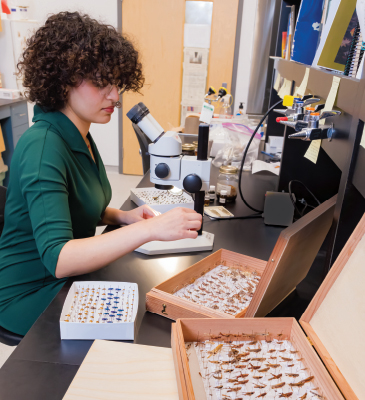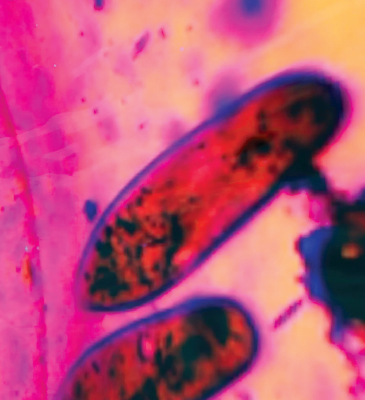A collaborative research-creation project between a pair of York University and Queen’s University artists that asks audiences to rethink their relationship to water is making a splash at exhibitions around the world.
By: Corey Allen

Created by York media artist Mary Bunch, alongside Queen’s interdisciplinary artist Dolleen Tiswaii’ashii Manning, the project combines virtual reality (VR) technology with Anishinaabe philosophy to create an immersive 3D experience where viewers can explore different planets made from microscopic images of water – and contemplate the unseen life within it.

“In a single drop of water, there are universes, microworlds animated by tiny animals,” says Manning, an assistant professor in philosophy and cultural studies at Queen’s and a member of Kettle and Stoney Point First Nation. “Our project’s philosophy stems from my theory of Mnidoo-worlding, a way of being from Ojibwe Anishinaabe knowledge, that sees human relations to niibii (water) as interrelated with spirit, potency, potential, process and energy, not human-centric, and more than a mere resource to extract.”
Titled Emerging from the Water, the project has been exhibited in multiple mediums at various venues, including at the United Nations 2023 Water Conference (in front of dignitaries from across the globe) and more recently at the Aga Khan Museum in Toronto, as part of a 2024 World Water Day event co-hosted by the UNITAR Global Water Academy and York University.

Bunch and Manning hope the project will spark critical conversations about the power of Indigenous thought and knowledge, environmental stewardship, and our collective responsibility to water. They are particularly interested in presenting the work to youth in the future.
“As a non-Indigenous scholar, the project has made me think about the emergence of modern technology and how the microscope gave the West and the world another view of reality invisible to the naked eye. But Indigenous cultures already accounted for that,” says Bunch, an associate professor in the Department of Cinema and Media Arts in the School of Art, Media, Performance and Design (AMPD) and Canada Research Chair in Vision, Disability and the Arts. Bunch is also a member of Connected Minds, a major York-led research initiative on socially responsible technologies.


Bunch continues: “What if that conversation between Western cultures and Indigenous cultures, instead of it being dominating and subjugating, had been a real conversation 500 years ago. Our sciences could have come together then, rather than more recently. More equitable relations have the potential to positively alter how we think and live. It could help to protect the environment and help improve the global water crisis.”
Emerging from the Water marks Bunch and Manning’s first research collaboration together. Funding for the project was provided by MITACS, the Native Women in the Arts, VISTA – Vision: Science to Applications (York’s first Canada First Research Excellence Fund program), the Social Sciences and Humanities Research Council (SSHRC) and the Media Arts program at York.
Read more

York researcher traverses tick-infested terrain to beat back insect apocalypse
A PhD student at York University is studying the effects of climate change on insect decline

Young innovators look to commercialize research with York fellowship
Four budding researchers at York University receive support from VPRI to help bring their products to market

Connected Minds: one year later
Neural and Machine Systems for a Healthy, Just Society - York University’s major research initiative, funded in part by the Canada First Research Excellence Fund - celebrates its first year of achievements

York-Queen’s art project combines VR with Anishinaabe philosophy to explore water’s hidden depths
A York University professor has partnered with a Queen’s University professor to create an immersive 3D experience that sparks critical conversations about the global water crisis
